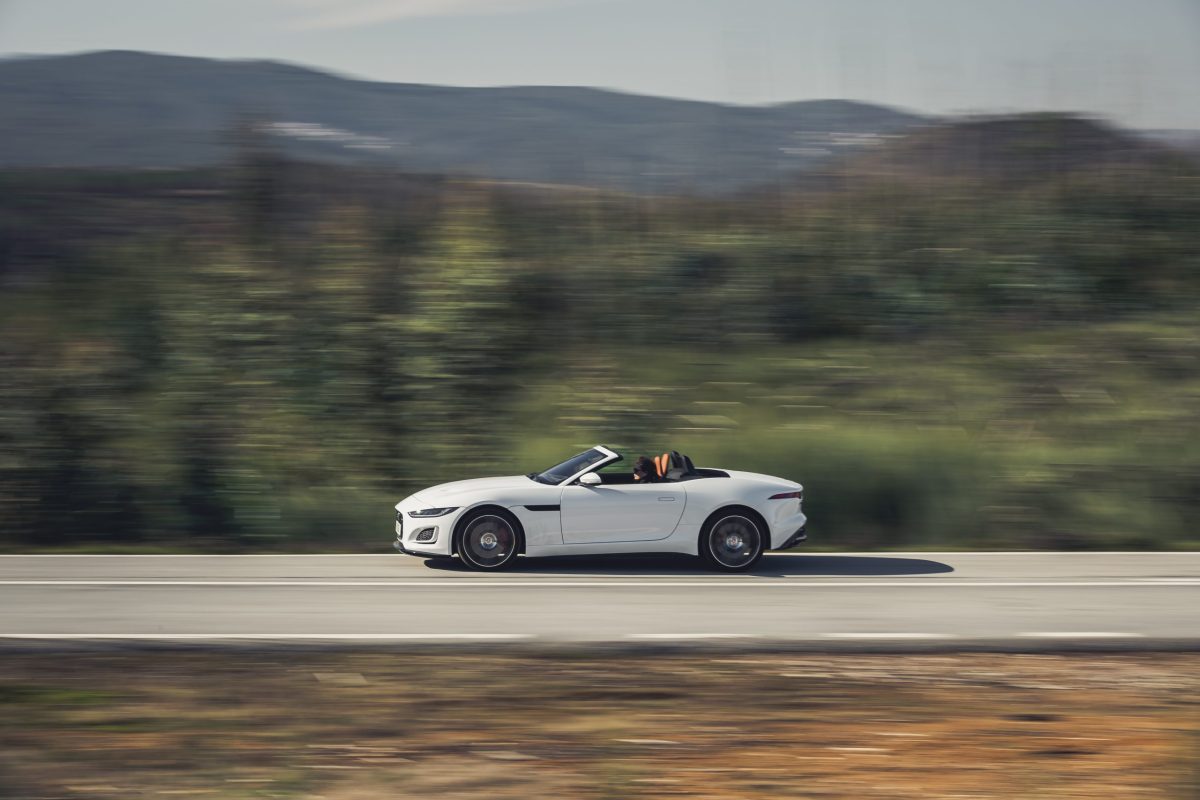[ad_1]
In Portugal, driving two variations of the new-generation Jaguar F-Type, we remembered that sometimes a car will surprise you. The F-Type R, with a 5.0-liter V-8 engine, has a starting price of more than $103,000. The other is a four-cylinder model—less interestingly named the P300—which starts at a more approachable $61,600. It’s that one—the less obvious example—that brings us the surprise.
We’re on back roads that connect backwater villages, the kinds of locales that are largely agricultural and upon which you may still find a horse cart traveling shakily down the lane. The roads are winding narrow, and they do not encourage the type of high speeds that the V-8-powered F-Type calls out for with its heady 575 horsepower.
In contrast, the less potent F-Type is ideally suited. The body is the same, of course, with the long hood and swelled rear fenders that harken to Jaguar’s glory days and its archetypal E-Type. But the 2.0-liter turbocharged unit weighs far less than the big engine, and is placed further back in the body, taking weight off the front.
This F-Type noses eagerly into turns, ably adapting to abrupt changes in direction. We’ve never really thought of the F-Type as a car that was light on its feet. It’s more the type of instrument where you lean hard on the brakes, get around a corner cautiously, and then hammer back on the gas. Point and shoot. This one allows you to carry momentum into and through turns, the sound of the Pirelli tires working hard underneath you. The top speed is 155 miles per hour. Enough to get you thrown into jail, so therefore quite quick enough.
Also, this is the only version of the F-Type currently offered as a rear-wheel drive, retaining the purity of an old-school sports car. The smaller engine still makes some good gurgling noises, especially when you suddenly come off the accelerator. The one we tested was a convertible, which is probably the right choice as a weekend play thing, but it’s also offered as a coupe.
Which brings us to the changes to the F-Type overall. Both the coupe and convertible are being treated as new, second generation cars, with tweaks to the exterior, interior, and significant suspension changes.
The F-Type was first launched in 2013 as a return to Jaguar’s sports-car form. Facing the popularity of crossovers and competition like the Porsche 911, it never really succeeded in the marketplace. You don’t see them on the street very often, which is in some sense a selling point of its own.
It was always a pretty car, penned under legendary designer Ian Callum. He’s gone now and his successor, Julian Thomson, has completely changed the headlamps, going for a high-tech look with a strip of super-thin LEDs. The grille is also slightly larger, and the bumpers have been refashioned. The interior feels familiar. Most notable is the upgrade to electronics, namely a digital screen in front of the driver and an updated and much improved infotainment system.
For those who do want to go the way of the R and its ample power, the chassis has been re-crafted with new anti-roll bars, aluminum rear knuckles, dampers, and springs. The brake-based torque vectoring was also reworked. This new level of precision plays nicely with the ample power, making the R more fluid than before.
When it comes to cars that are primarily for enjoyment, the elements of joy and surprise are fundamental. The F-Type—in whatever guise—delivers on that contract better than ever before.
Images courtesy of Jaguar
[ad_2]
Source link https://coolhunting.com/design/jaguar-revised-f-type/






